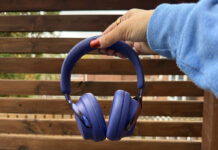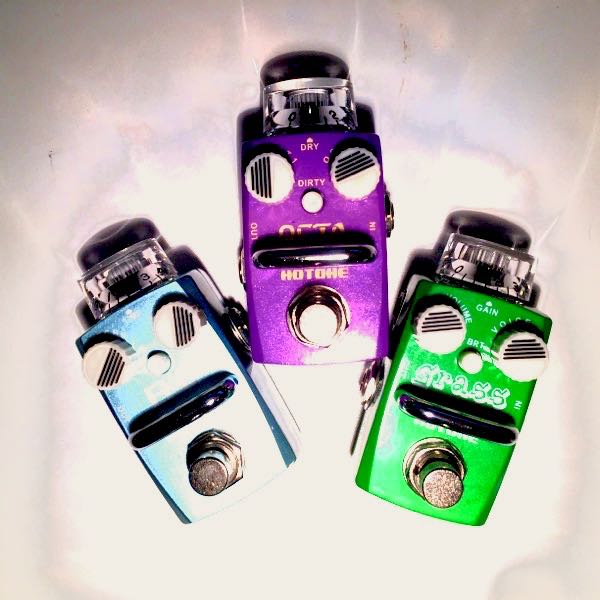
With a plethora of guitar pedal effects manufacturers producing an increasing number of beautiful looking and sounding pedals, the average pedal board has little real estate to accommodate all that you may want. Between your distortion/overdrive, volume pedal, wah, chorus, delay, power supply, and whatever other modulation or simulation effects are also in play ther may be no more room for new effects you want to add to the chain. Hotone Audio has responded with some very aesthetically appealing and fun sounding pedals that are price friendly and take up about 1/3 of the space that your average stompbox requires. This blog will look at the Eko (delay), Grass (overdrive), and Octa (Octave effect) from the company’s Skyline product line.
While the debate continues online and in guitar stores worldwide as to how you should actually pronounce the company name – consensus seems to be “Haw Tone” as opposed to “Hot One” or “Ho Tone” even though there is only one T—let’s set that aside and deal with what matters most. That of course is how they sound, function, and might ultimately provide to you by living on your pedal board. A little background first is in order however. It isn’t the easiest thing to source out, which I found quite odd, but it appears that Hotone, operates out of Hong Kong and their pedals are manufactured in China. The company’s website does not list this anywhere that I could find but with Google as my ally, this appears to be where they are from. This leads back to the question of pronunciation as some have claimed online that Ho is a Chinese name meaning good or great so Ho Tone would be correct, or at least make some sense.
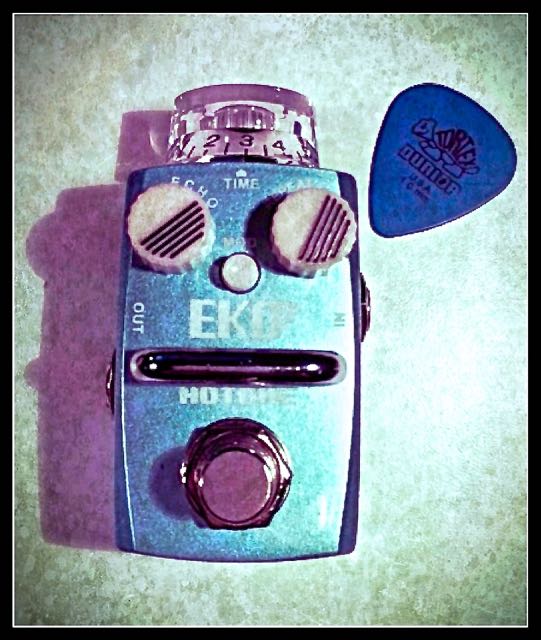
Hotone has an exponentially increasing line of mini effects pedals that take up about 1/3 of the space that a regular pedal might which, among other things, will allow you more space to include effects on your pedal board. One major result of their small size, and something that needs to be addressed immediately as it will stop some from purchasing it (and it shouldn’t) is that there is no battery to power any of the stompboxes. Thus you require an external power source like a 9V DC adapter for each pedal or more judiciously, an onboard power supply for all of your effects. If you use multiple pedals this is really the only way to go. Cheaper in the long run, cleaner on the board, and very easy to set up and still move around your pedals.
Now, while I wasn’t at NAMM this year (or any year. I live vicariously through YouTube videos and friend’s tales of awesome wonder), Hotone apparently introduced an upcoming innovation called the XTOMP and as a result won a Best in Show “Company to Watch” award. The Xtomp is a Bluetooth stomp box with iOS integration allowing you to control your effects and their settings on a mobile device and transfer them into your stompbox. I so hope I get a chance to test that. But back to the pedals at hand.
General Overview
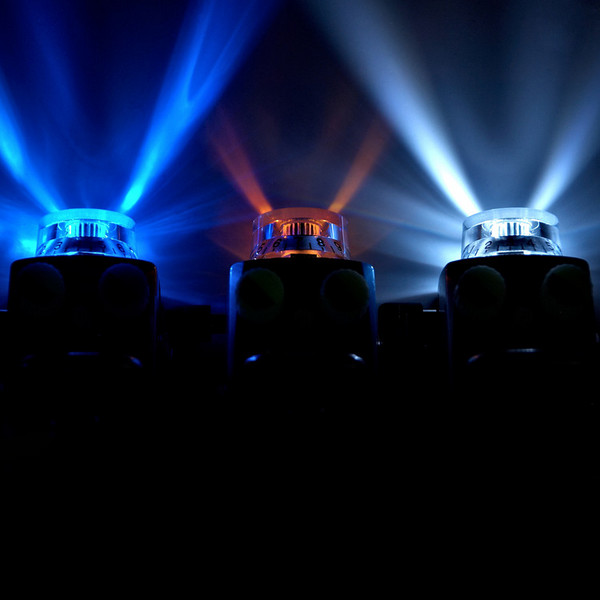
All three of the pedals are identical in their footprint, and a small footprint it is. They also all feature a ¼” input and output, 2 top mounted dials (their roles varies on each pedal), a button between the dials which also serves a different purpose on each pedal, a 9V adapter input for power as there is no battery, a “safety” bar in the middle of the top which I assume is to protects the dials and button from coming in contact with the foot when depressing the main switch, located at the bottom of the unit. The main switch, which is what would be depressed with your foot, is a true bypass switch meaning that when the effect is off, the signal flows through as if there were no pedal even there. The premise is that you have none of your tone sucked out on its trip to your amplifier. Depending on how many pedals you have in your signal chain from guitar to amp, all of the inputs and outputs as well as the switching required to bypass the internal electronics will still have an effect on your overall tone and the bottom line is the more cable in your signal the more tone you lose and a bypass can not help that. But this is likely a blog for another day.
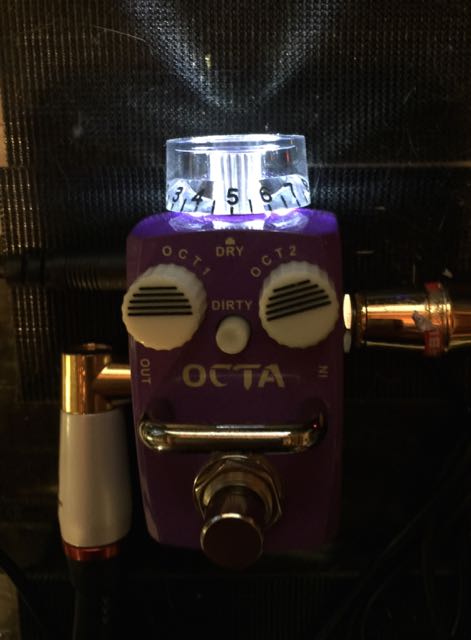 One of the more unique, and frankly user intuitive features, is the large clear dial, or the “big knob”, located on the top of each pedal in the line. The big knob also performs a different function for each pedal and is most noticeable in that it lights up with 2 LEDs in a very stunning way when the pedal is in working mode. Both aesthetically pleasing and functional as it is easy to access and a user intuitive location for a main mode of effect adjustment and is just one of the ways that the Hotone pedals set themselves apart from the competition.
One of the more unique, and frankly user intuitive features, is the large clear dial, or the “big knob”, located on the top of each pedal in the line. The big knob also performs a different function for each pedal and is most noticeable in that it lights up with 2 LEDs in a very stunning way when the pedal is in working mode. Both aesthetically pleasing and functional as it is easy to access and a user intuitive location for a main mode of effect adjustment and is just one of the ways that the Hotone pedals set themselves apart from the competition.
When looking down on the pedals from above, their configuration gives them a very “face-like” appearance as well which simply adds to their unique character. Each of the pedals come in a box that includes stickers, pre-cut pieces of foam and Velcro to affix to the bottom of your pedal depending on how you choose to use it, and a trading card sized owner’s manual that let’s you know what each of the pedal’s dials and switches control. So let us look at each of the 3 effects in more detail.
Grass
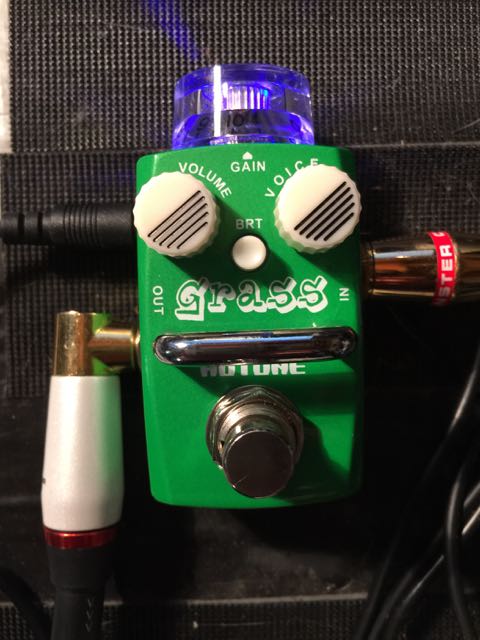 The Hotone Skyline Grass pedal is one of the pedals in the line that falls under the category of overdrive effects. The other is the Blues pedal. As far as appearance, it is a vibrant green in colour and when in use, both the colour and the resultant tone give more than a subtle hint to the Ibanez Tube Screamer overdrive so I can only assume that the choice of green is intentional in this case. The Grass pedal’s left dial (VOLUME) controls the output volume of your signal, the right dial (VOICE) controls the tone (or the “brilliance and sound details” as the manual puts it), the button (BRT) is for a brighter sound by increasing treble, and the big knob controls the amount of gain your overdrive receives. These variations of equalizing effects provide the user with a multitude of sound options from light overdrive with more bottom end to a much stronger distortion with full gain adding significant sustain and then when the BRT button is depressed, adding that higher end that will allow your tone to cut through any potential mud in your band’s sound and shine through.
The Hotone Skyline Grass pedal is one of the pedals in the line that falls under the category of overdrive effects. The other is the Blues pedal. As far as appearance, it is a vibrant green in colour and when in use, both the colour and the resultant tone give more than a subtle hint to the Ibanez Tube Screamer overdrive so I can only assume that the choice of green is intentional in this case. The Grass pedal’s left dial (VOLUME) controls the output volume of your signal, the right dial (VOICE) controls the tone (or the “brilliance and sound details” as the manual puts it), the button (BRT) is for a brighter sound by increasing treble, and the big knob controls the amount of gain your overdrive receives. These variations of equalizing effects provide the user with a multitude of sound options from light overdrive with more bottom end to a much stronger distortion with full gain adding significant sustain and then when the BRT button is depressed, adding that higher end that will allow your tone to cut through any potential mud in your band’s sound and shine through.
While playing the grass through a clean channel on My Marshall DSL tube amp, I thought the tone was just OK, to be honest. I could tweak the pedal settings to try and grab the ideal that was in my head but I felt like it might have been a bit thin overall and lacking any real bite. When I played it through another amp channel with some gain added in the amplifier, this is where the Grass started to shine. Frankly I’ve always thought that on its own an overdrive pedal is missing something. Of course this is genre specific as someone who plays in a different field of music, jazz perhaps, may want the lighter overdrive that functions simply as a slight boost to their tone whereas in hard rock or metal, I personally want something that sonically smashes you in the face and an overdrive can do that when added to some onboard gain.
EKO
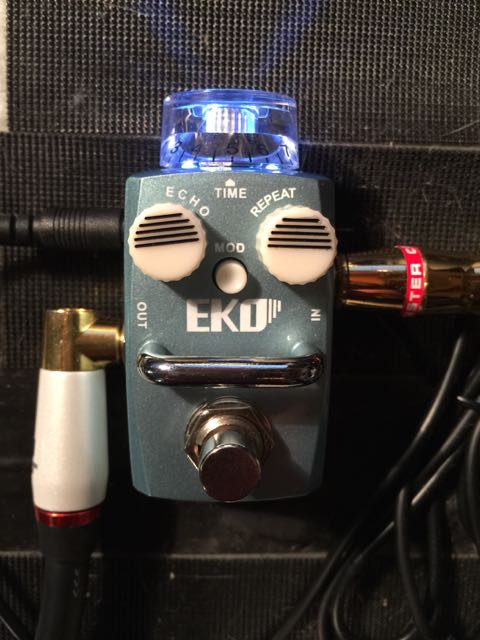 The EKO delay pedal has a significantly wide range of delay and modulation effect available through its controls. The left dial (ECHO) controls the level of the delay sound, the right dial (REPEAT) controls the feedback of the delay sound, the button (MOD) adds a chorus effect, and the big knob (TIME) controls the delay time or speed of repetition. You can literally take this pedal from a barely perceptible level of delay that serves to sweeten your sound and make it fuller all the way to some very space age and trippy types of delay. I found that using the EKO with the MOD button pressed in conjunction with the Grass pedal gave a very nice tone for some searing lead work that would really stand out in a mix. The pedal produces a nice warm tone that works well with creating some atmospheric type delay as well. Al in all, the EKO pedal is very versatile in what you can achieve and unlike may other delay pedals available, can do so without requiring a specialized degree in electrical engineering and ethereal sound design.
The EKO delay pedal has a significantly wide range of delay and modulation effect available through its controls. The left dial (ECHO) controls the level of the delay sound, the right dial (REPEAT) controls the feedback of the delay sound, the button (MOD) adds a chorus effect, and the big knob (TIME) controls the delay time or speed of repetition. You can literally take this pedal from a barely perceptible level of delay that serves to sweeten your sound and make it fuller all the way to some very space age and trippy types of delay. I found that using the EKO with the MOD button pressed in conjunction with the Grass pedal gave a very nice tone for some searing lead work that would really stand out in a mix. The pedal produces a nice warm tone that works well with creating some atmospheric type delay as well. Al in all, the EKO pedal is very versatile in what you can achieve and unlike may other delay pedals available, can do so without requiring a specialized degree in electrical engineering and ethereal sound design.
OCTA
My personal favourite of the three was the OCTA pedal, which takes your dry signal and adds 2 octave voices to it in a very easily controllable way. The left dial (OCT1) controls the volume for your first octave shift, which is 1 octave down, and the right dial (OCT2) controls the second octave, which is 1 octave up from the dry signal. The button (DIRTY) gives an “old school” octave sound that has no effect on OCT1 but changes OCT2 from 1 octave up to 2 octaves down. The big knob (DRY) controls the volume for your dry signal and really lets you dial in the tone that you want. I had a great deal of fun playing around with this pedal to see what sounds it would generate and was really pleased when I hit this sweet spot that produced some very warm organ like tones. When I added some EKO delay to this, it became even more distinct and I realised that the possibilities for recreating some 60s/70s flavoured tone was literally and my fingertips (and soles of my feet). I had much more success with this pedal playing individual notes than any types of chords but as an added flavour to an existing layer of music, the OCTA pedal can provide significantly entertaining and pleasing possibilities.
Bottom Line
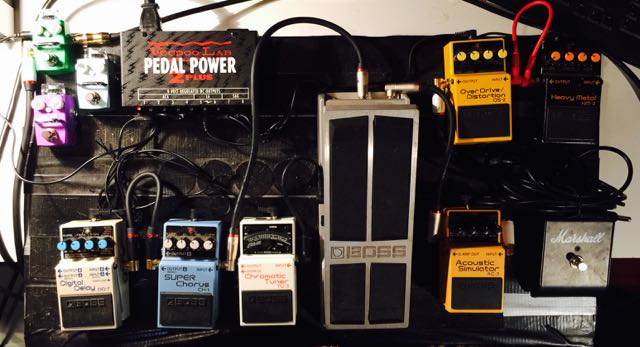
If space on your pedal board is at a premium, then these reasonably priced micro stompboxes may just be what you are looking for. Taking up about 1/3 of the real estate that a conventional pedal uses, you potentially have room for more effects in the same sized area and when used in conjunction with one another, the Hotone Skyline pedals really demonstrate their worth. I will reiterate, however, that these pedals do require their own power source as there is no battery option. These pedals are attractive, unique, versatile, and seemingly well constructed from metal rather than plastic to withstand significant use. Hotone has entered into an already busy field in a meaningful way and it will be interesting to see what innovations this company has up their sleeves in the future. I encourage you to give these pedals an opportunity to reside on your pedal board.
Here is a video that my Best Buy musician colleague Marc-André created to show off some of the effects you can get from Hotone pedals:



